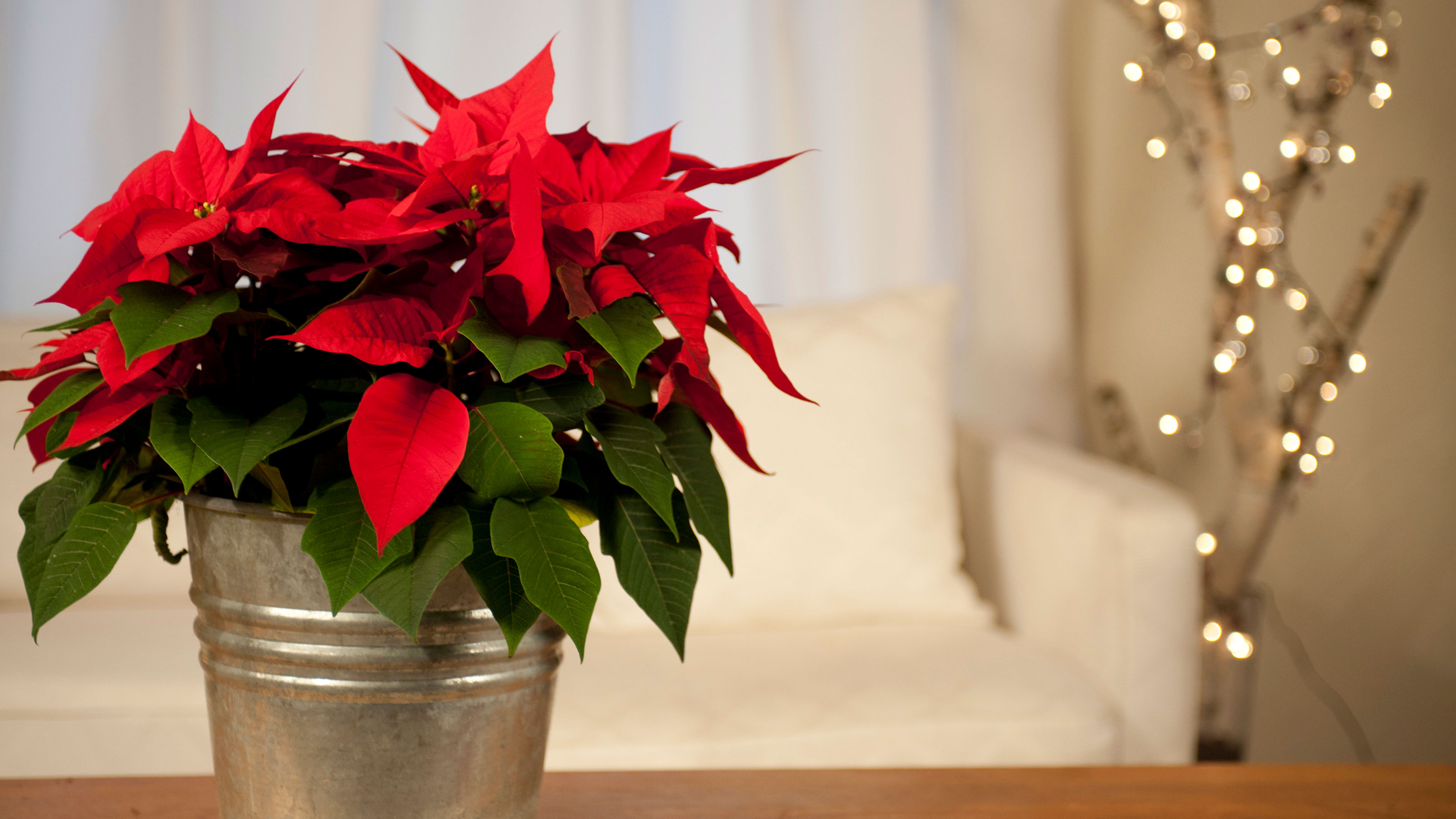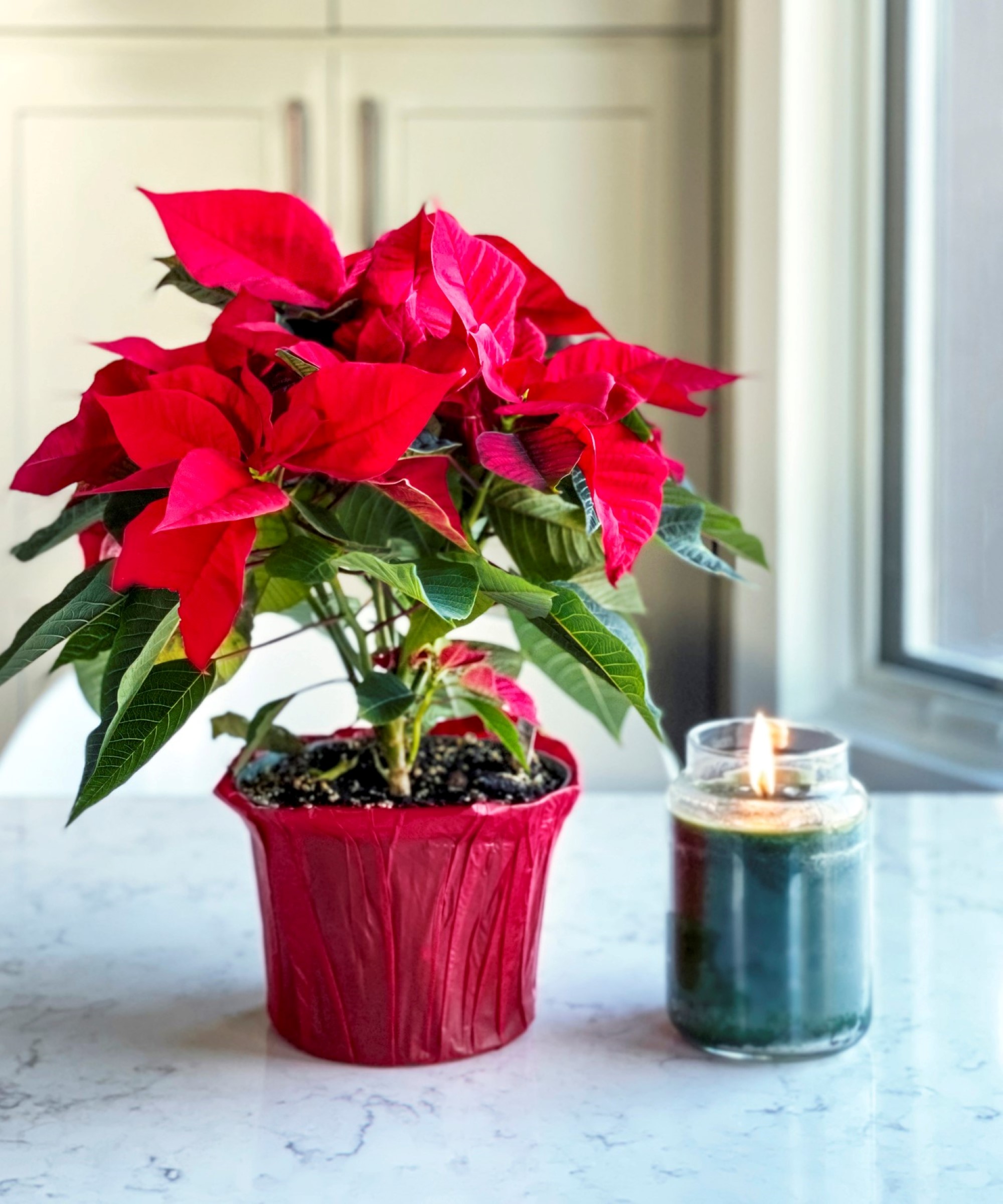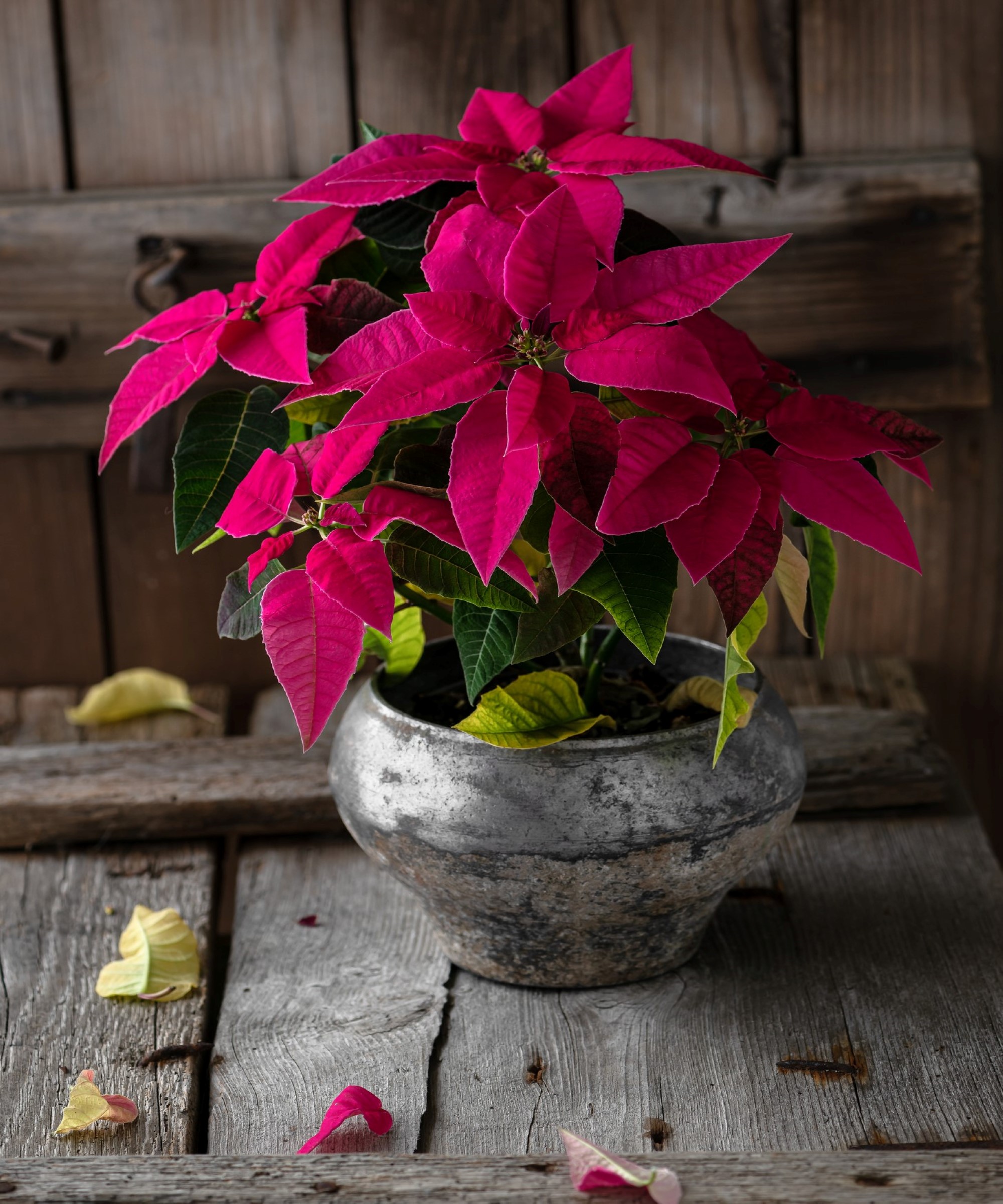Why are my poinsettia's leaves falling off? Experts reveal the common causes
Wondering why your poinsettia's leaves are falling off? Plant experts offer their top tips for rescuing the Christmas favorite


Wondering 'why are my poinsettia's leaves falling off?' If that's the case, chances are you want to solve it quickly so your festive plant can once again take pride of place in your seasonal displays.
Poinsettias are a firm Christmas favorite thanks to their colorful fronds that look like leaves. Bright red or hot pink are the most popular colors, and many people gift poinsettias to their loved ones or use them as part of their Christmas decor.
For all the beauty, poinsettias do have a few unusual requirements if your plant is to survive the weeks leading up to Christmas and beyond the big day too. If you learn how to care for a poinsettia properly, it can grow happily in your home for many years to come.
If your poinsettia is dropping its leaves, it's time to investigate what could be going wrong for your plant.

4 common reasons why a poinsettia's leaves fall off
Once you know the most common reasons for poinsettia leaf drop, you can hopefully nurse your favorite Christmas plant back to good health.
1. Over or underwatering
As is true of the vast majority of indoor plants, poinsettias dislike being either over- or underwatered.
As a certified horticulturist and co-founder at The Indoor Nursery , expert Brody Hall says: 'Poinsettias require well-draining, evenly moist soil to thrive. Over-watering can cause the leaves to droop and eventually fall off, while underwatering can cause the leaves to turn yellow and then drop.'
The easiest way to water your poinsettia correctly is to make sure that the top layer of soil dries out before you water again. Use the finger test: dip your finger into the soil; the top half-inch should be dry before you water.

2. Lack of light
While it is true that poinsettias need 12 hours of darkness every night in the months leading up to the blooming season, once a poinsettia begins blooming it does need plenty of bright light during the day to thrive.
Brody Hall advises that 'poinsettias need a minimum of six hours of direct or indirect light daily. If the plant is not getting enough light, the leaves will turn yellow, droop, and fall off.'
Poinsettias thrive in bright, warm kitchens and living rooms. Avoid keeping them in dark rooms all day.
A lack of light can also be reason why a poinsettia isn't turning red.
3. Low temperatures
Poinsettias are South American natives and dislike the cold, even though people in the northern hemisphere like displaying them around Christmas time.
Jean Bloom, a blogger at Gardening FAQs and an avid gardener for over 30 years, explains that 'poinsettias typically lose their leaves when subjected to rapid temperature fluctuations, drafts, or very cool or dry environments.'
If you keep your poinsettia on a windowsill, make sure the window isn't drafty and isn't opened frequently. Brody Hall adds that you should 'keep the temperature stable between 65-70˚F (18-21˚C)' in the room where the poinsettia is kept. A draft-free environment is also a good idea if you've made a poinsettia centerpiece for your festive decorations and want the leaves to last as long as possible.
Top tip: Try to avoid buying poinsettias from supermarkets. They are typically exposed to cold drafts, especially if they're sold next to an entrance/exit. By the time you bring your plant home, it's often already dying from overexposure to the cold. Try to buy your poinsettias from reputable plant nurseries or garden centers.

4. Your poinsettia is suffering from pests
Poinsettias, unfortunately, can be attacked by common houseplant pests. Lindsey Hyland, a gardening expert and the founder of Urban Organic Yield, points out that 'pests such as mealybugs and spider mites can cause poinsettia's leaves to fall off.'
If you notice either pest on your plant, the first step is always to try and get rid of as much of them as you can with a q-tip dipped in a mild soap solution or diluted neem oil, available from Amazon. Next, give your plant a warm shower to get rid of any remaining bugs.
The best cure, however, is prevention: buying your poinsettias from a reputable grower should reduce the chance that they will be pest-infested. It also gives you the best chance of having a healthy plant so you can propagate your poinsettia in the future and get extra plants for free.
Anna writes about interior design and gardening. Her work has appeared in Homes & Gardens, Livingetc, and many other publications. She is an experienced outdoor and indoor gardener and has a passion for growing roses and Japanese maples in her outside space.
